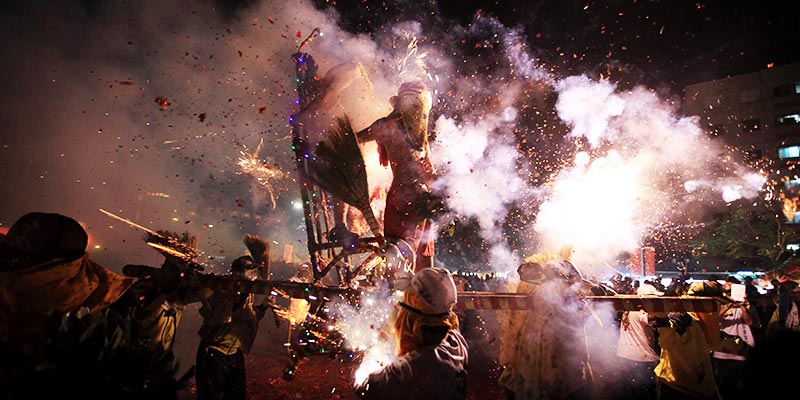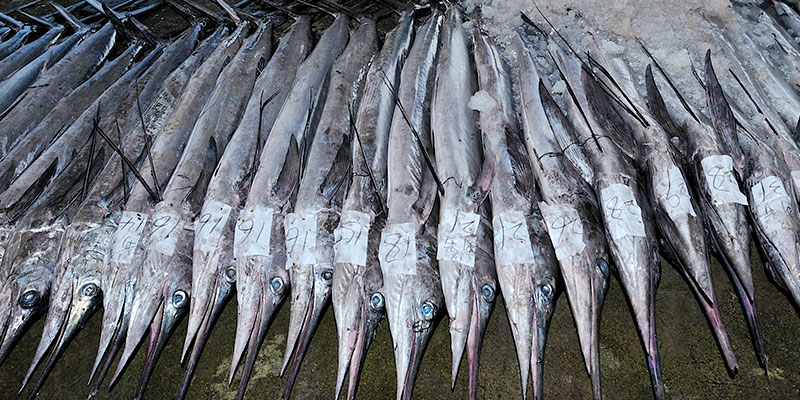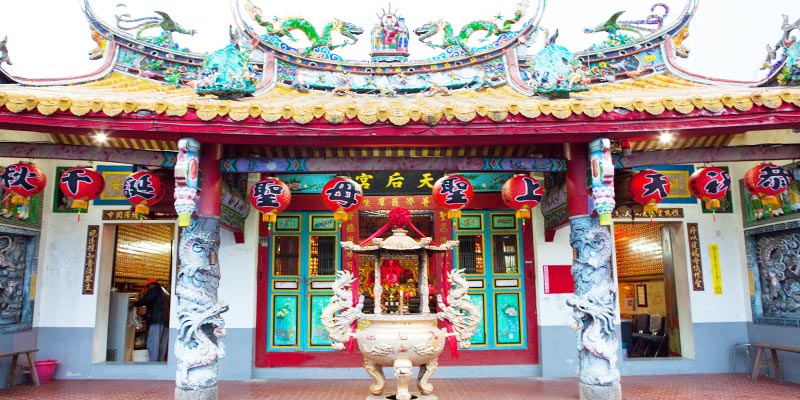Religious festivals
Local cultural energy
Taiwan is a place of religious diversity, where traditional beliefs and religions introduced from overseas exist side by side. Taiwan's main traditional religions are Buddhism, Daoism and folk belief. There are some purely Buddhist temples but most temples have a Daoist flavor.
Lantern Festival Bombing Lord Handan(with Firecrackers)
In coordination with traditional folk culture events, creative art and cultural activities highlight the common people's spirit and cultural value of Tatung's Lantern Festival activities.Taitung's annual Lantern Festival Blessing Procession is a historic local cultural event in which private groups and temples take part. The route takes in downtown Taitung, passing Taitung City Office, along Nanjing Road, past Baoding Art and Cultural Center and through Waterfront Park, pilgrims praying to the gods to give good weather and keep the people safe.
- Service Units Taitung County Government-Religion and Folk Customs Section +886-89-311090
Sailfish Festival
Out of respect for the ocean, the Han Chinese and aborigines of Chenggong, a town that depends on fishing, hold a series of sailfish-themed activities at the height of the sailfish season in October and November.Temple manager Qiu Xia leads pilgrims around the sailfish god, while reciting the legend of the sailfish god,also blessing all the people who come to ask the god for protection, putting their minds at ease.
- Location Wan Shan Ye Temple next to Xingang Fishing Harbour, Chenggong.
Chengguangao Matsu Temple
Chenguangao is the largest natural harbor on the east coast and the place where the first Han settlers in Taitung landed; the temple is the oldest Mazu temple in Taitung. The local fishing folk depend on the sea for their living so traditionally mainly worship the goddess Mazu. The temple was built in 1871 and rebuilt in 1949;when it was rebuilt local aborigines were asked to paint the bucket arches on the pillars, the first time aborigines had taken part in the decoration of a temple in Taiwan and showing the all-embracing nature of Taiwanese culture.
Other Tour






